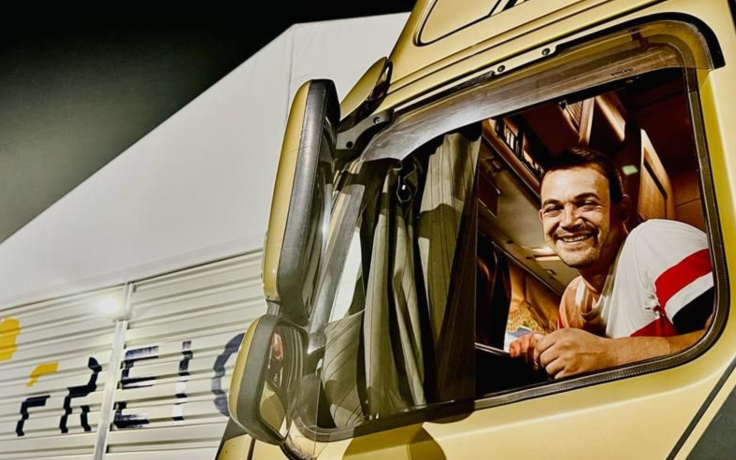The trucking industry is facing a chronic driver shortage. We asked Freightsafe’s Head of Business Development, Sholto Millar, what can be done to improve the working conditions of long-haul truckers.
The latest IRU driver shortage survey finds that more than three million truck driver jobs are currently unfilled in 36 countries, a grim figure that is expected to double by 2028 unless major action is taken.
The report also includes best practices and measures to make the profession more accessible and attractive.
This is how Freightsafe, a member of the International Transport Union, works to improve working conditions for truck drivers.
What are the main challenges associated with the driver shortage?
With the number of older drivers increasing, the driver shortage has steadily worsened over the past 20 years. Today, the average age of a driver in Europe is 47. The industry is struggling to attract enough new drivers to meet the demand for road freight services.
The severe lack of safe parking conditions is one of the issues that hinders the profession. Addressing this critical issue has been at the heart of our work.
But we are increasingly realising that the time young people spend away from home, family and friends while undergoing long-term operations is another reason why young people are less tempted to take up this profession.
For potential drivers, especially younger ones, this was a major deterrent, as the demand to spend weeks away from home could hamper a person’s social life.
Unfortunately, the decline in the number of drivers joining the long-haul transport industry means increased workloads for those already working. We need to improve their working conditions as much as possible.
What solution does Freightsafe offer?
Freightsafe designs, builds and operates modular truck parking areas and cargo zones, using the “sharing economy” concept.
All of our parking areas are built by reusing truck-related real estate (e.g. warehouses, repair centers, ports). We install truck parking infrastructure connected to Bosch’s secure truck parking reservation platform. This infrastructure includes physical and digital access control solutions, allowing users to secure their space through a physical barrier linked to their digital reservation.
After Sweden, Germany and Spain, we will soon be launching our sixth location near Nuremberg in Germany, with plans to establish our first location in Italy later this year.
All Freightsafe locations are designed to be equipped with electric vehicle chargers, supporting the transition to electrification and the future of trucking.
How it works?
Freightsafe is primarily based on a customer-centric approach, leveraging the power of the sharing economy to locate locations in a chosen area. The Freightsafe Park & Charge hub host receives a monthly payment in exchange for the space they have used. This creates a “site within a site” where they are not required to invest, operate, or take responsibility for any aspects. Users can sign long-term contracts to secure use of the site.
Alternatively, the site could operate as a public pay-for-parking system, where trucks reserve their space in advance. The dispatcher makes a reservation on the Bosch platform and a pre-selected access control method (license plate recognition cameras, QR codes, RFID cards, or a web link) is sent to the site to open the gate. Once the driver arrives at the site, he uses the chosen method and can access the individual parking space (and charging). Once comfortable, the driver simply leaves and the user is billed monthly.
What is the new “drop and swap trailer” operating model?
The “drop and swap trailer” model is based on the concept of relays such as the Pony Express in the 19th century.
Instead of driving trucks on routes that span several days across Europe, drivers operate their trucks on a single route within a larger relay network.





